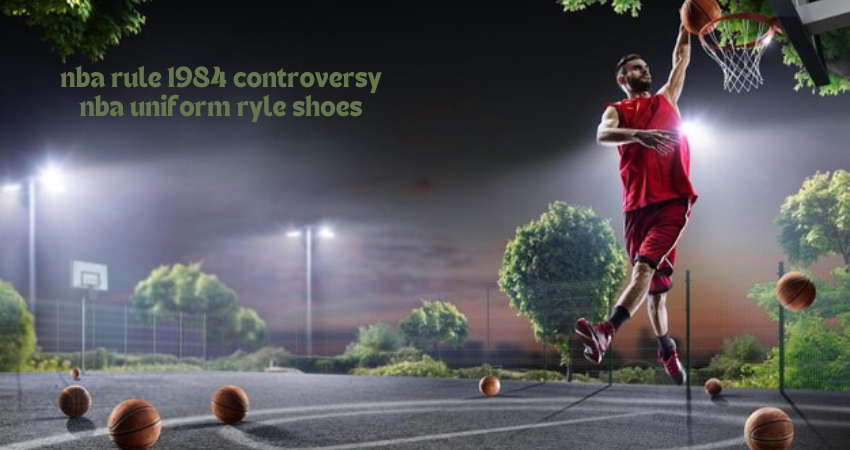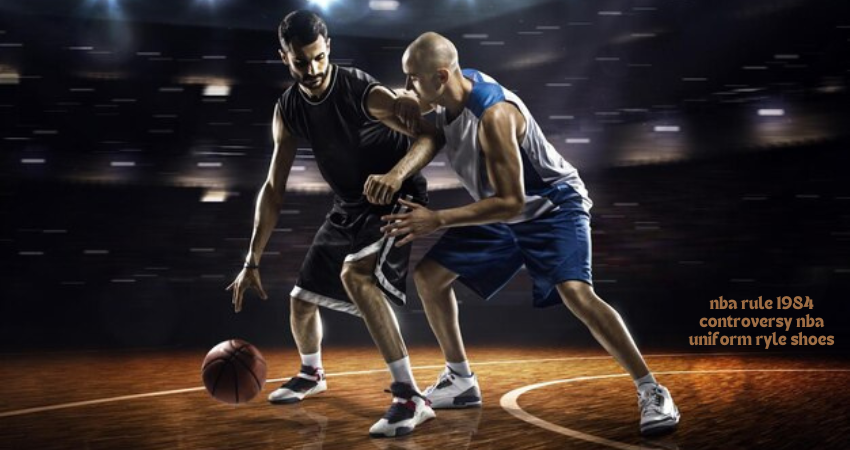The nba rule 1984 controversy nba uniform ryle shoes has always been more than a league; it’s a canvas, a battleground, a theater where dreams meet destiny. But among its vibrant tales of triumph and turmoil, few episodes shine as brightly—and controversially—as the rule changes of 1984. This year was a turning point for the NBA, a moment when rules about uniforms and shoes ignited debates that went far beyond the court.
The 1984 controversy surrounding the NBA’s uniform and shoe rules wasn’t just about fashion or branding—it was a cultural flashpoint, a struggle for individuality, a fight for freedom of expression. It was a story of rebellion and resistance, of players asserting their identities and of a league grappling with its future.
Let us now journey through the intricate web of events, decisions, and legacies of this fateful year.
The Stage Was Set: Basketball in the Early 1980s
The early 1980s were a time of transformation for the nba rule 1984 controversy nba uniform ryle shoes. Basketball was evolving rapidly, with players like Magic Johnson, Larry Bird, and Julius Erving elevating the game to new heights. The league was growing in popularity, but it was also finding its place in a world that was becoming increasingly commercialized.
During this era, the league sought to standardize the appearance of its players, aiming to maintain a professional image. Uniforms were to be pristine and cohesive—a reflection of the team’s unity and discipline. Shoes, too, were expected to conform, both in color and style, to the team’s palette.
But even as the NBA sought control, the players—young, confident, and deeply aware of their star power—began to challenge the boundaries. Their individuality simmered beneath the surface, waiting for the right moment to erupt.

1984: The Year the Rules Were Tested
In 1984, the NBA made a controversial move: it reinforced its uniform and shoe policy. According to the new guidelines, all players were required to wear shoes that matched their team colors. The shoes had to be predominantly white, with only minor accents in the team’s secondary colors.
For the league, this was about maintaining consistency. For the players, however, it felt like a cage. The sneakers they wore weren’t just equipment—they were symbols of identity, vehicles for self-expression, and, increasingly, tools of marketing and branding.
This was the year that Michael Jordan entered the league. His rookie season with the Chicago Bulls wasn’t just about his gravity-defying dunks or game-winning shots—it also marked the arrival of a cultural icon. Jordan’s partnership with Nike introduced the world to the Air Jordan 1, a shoe unlike anything basketball had seen before.
The Air Jordan Revolution
The Air Jordan 1 wasn’t just a sneaker; it was a statement. It came in bold red and black—a stark contrast to the league’s predominantly white shoe rule. When Jordan wore the Air Jordan 1 on the court, it was an act of rebellion, a declaration of independence.
The NBA wasn’t pleased. The league fined Jordan $5,000 every time he wore the shoes, citing the violation of its uniform policy. Nike, sensing an opportunity, happily paid the fines. The controversy turned into a brilliant marketing strategy, with Nike famously running ads that declared, “The NBA threw them out of the game. Fortunately, the NBA can’t stop you from wearing them.”
The public loved it. The Air Jordan 1 became a cultural phenomenon, selling out almost instantly. It wasn’t just a shoe—it was a movement, a symbol of defiance and individuality.
The Power Struggle: Players vs. The League
The controversy over the Air Jordan wasn’t just about sneakers—it was a microcosm of a larger struggle between players and the league. The NBA wanted control; the players wanted freedom.
For years, players had quietly adhered to the league’s uniform and shoe policies. But in 1984, with Jordan as the catalyst, they began to push back. The NBA’s rules felt archaic, out of touch with the growing influence of sneaker culture and the individuality of its players.
The players weren’t just athletes—they were brands, icons, and cultural leaders. They wanted the freedom to express themselves through their gear, to wear shoes that reflected their personalities, their style, and their stories.
The Cultural Impact: Beyond Basketball
The 1984 uniform and shoe controversy didn’t just change the NBA—it resonated far beyond the court. Sneaker culture exploded, becoming a cornerstone of streetwear and hip-hop fashion. The Air Jordan 1 became a status symbol, coveted by fans, collectors, and fashionistas alike.
The controversy also sparked conversations about individuality and self-expression in sports. It challenged traditional notions of conformity, inspiring athletes in other leagues to assert their own identities.

The Aftermath: Changing the Game
The nba rule 1984 controversy nba uniform ryle shoes eventually loosened its uniform and shoe policies, recognizing the need to adapt to the times. By the late 1980s, players had more freedom to wear shoes that reflected their personal style, paving the way for the colorful, creative sneakers we see today.
The legacy of the 1984 controversy lives on. It’s evident in the custom sneakers players wear today, in the vibrant designs that dominate sneaker culture, and in the enduring popularity of the Air Jordan line.
The NBA Today: A Celebration of Individuality
Today, the NBA is a league that celebrates individuality. Players express themselves not just through their gameplay, but also through their fashion, their activism, and their creativity. The uniform and shoe rules of 1984 are a distant memory, but their impact is still felt.
The league has embraced the cultural power of sneakers, partnering with brands to release exclusive collections and encouraging players to wear custom designs. It’s a far cry from the rigid policies of the past—a testament to the power of rebellion, creativity, and progress.
Frequently Asked Questions (FAQs)
Q: Why did the NBA implement strict uniform and shoe rules in 1984?
A: The league sought to maintain a professional and cohesive image by standardizing players’ appearances, including their uniforms and shoes.
Q: What made the Air Jordan 1 so controversial?
A: The Air Jordan 1 defied the NBA’s rules by featuring bold red and black colors instead of the predominantly white designs required by the league.
Q: How did Nike capitalize on the controversy?
A: Nike used the NBA’s fines as a marketing tool, running ads that highlighted the league’s rejection of the shoes and framing the Air Jordan 1 as a symbol of rebellion.
Q: How did the 1984 controversy impact sneaker culture?
A: The controversy helped ignite the global sneaker culture, elevating basketball shoes from functional equipment to cultural icons.
Q: Did the NBA change its uniform and shoe rules after the controversy?
A: Yes, the league eventually relaxed its policies, allowing players more freedom to wear shoes that reflected their personal style.
Q: What is the legacy of the 1984 uniform and shoe controversy?
A: The controversy paved the way for greater individuality and self-expression in sports, influencing both the NBA and broader cultural trends.
Conclusion: A Defining Moment in Basketball History
The 1984 NBA uniform and shoe controversy was more than a clash of rules and rebellion—it was a defining moment in basketball history. It changed the way players expressed themselves, reshaped the league’s relationship with culture, and ignited a sneaker revolution that continues to this day.
It’s a story of defiance and progress, of individuality triumphing over conformity. And as we look back on this iconic era, we’re reminded that the greatest players—and the greatest moments—aren’t just about the game. They’re about the courage to stand out, to challenge the rules, and to change the world.


